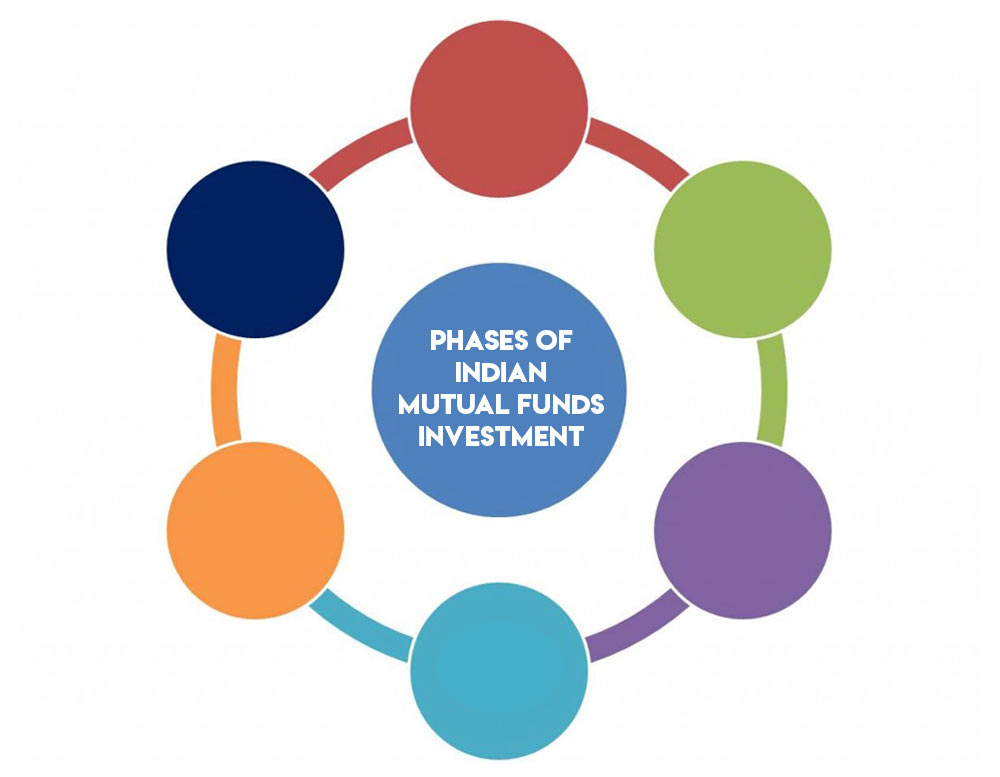
The foundation of the mutual funds industry in India dates back to the time when mutual fund was introduced by UTI in 1963. The growth path has been staggering but it saw a surge from 1987 when there other players also entered the market. Mutual Fund Investment India have witnessed an outstanding development both quality and quantity wise. Thus it is recommended to follow up with the potential of the mutual fund investment India for a better growth prospect.
4 phases in the Indian Mutual Funds investment India are:
- First Phase – 1964-87
- Second Phase – 1987-1993 (Entry of Public Sector Funds)
- Third Phase – 1993-2003 (Entry of Private Sector Funds)
- Fourth Phase – since February 2003
First Phase – 1964-87: Unit Trust of India (UTI) was established on 1963 by an Act of Parliament. It was set up by the Reserve Bank of India and functioned under the Regulatory and administrative control of the Reserve Bank of India. In 1978 UTI was de-linked from the RBI and the Industrial Development Bank of India (IDBI) took over the regulatory and administrative control in place of RBI. The first scheme launched by UTI was Unit Scheme 1964. At the end of 1988 UTI had Rs.6,700 crores of assets under management.
Second Phase – 1987-1993 (Entry of Public Sector Funds): Entry of non-UTI mutual funds. SBI Mutual Fund was the first followed by Canbank Mutual Fund (Dec 87), Punjab National Bank Mutual Fund (Aug 89), Indian Bank Mutual Fund (Nov 89), Bank of India (Jun 90), Bank of Baroda Mutual Fund (Oct 92), LIC in 1989 and GIC in 1990. The end of 1993 marked Rs.47,004 crores as assets under management.
Third Phase – 1993-2003 (Entry of Private Sector Funds): With the entry of private sector funds in 1993, a new era started in the Indian mutual fund industry, giving the Indian investors a wider choice of fund families. Also, 1993 was the year in which the first Mutual Fund Regulations came into being, under which all mutual funds, except UTI were to be registered and governed. The erstwhile Kothari Pioneer (now merged with Franklin Templeton) was the first private sector mutual fund registered in July 1993.
The 1993 SEBI (Mutual Fund) Regulations were substituted by a more comprehensive and revised Mutual Fund Regulations in 1996. The industry now functions under the SEBI (Mutual Fund) Regulations 1996.
The number of mutual fund houses went on increasing, with many foreign mutual funds setting up funds in India and also the industry has witnessed several mergers and acquisitions. As at the end of January 2003, there were 33 mutual funds with total assets of Rs. 1,21,805 crores. The Unit Trust of India with Rs.44,541 crores of assets under management was way ahead of other mutual funds.
Fourth Phase – since February 2003: This phase had bitter experience for UTI. It was bifurcated into two separate entities. One is the Specified Undertaking of the Unit Trust of India with AUM of Rs.29,835 crores (as on January 2003). The Specified Undertaking of Unit Trust of India, functioning under an administrator and under the rules framed by Government of India and does not come under the purview of the Mutual Fund Regulations.
The second is the UTI Mutual Fund Ltd, sponsored by SBI, PNB, BOB and LIC. It is registered with SEBI and functions under the Mutual Fund Regulations. With the bifurcation of the erstwhile UTI which had in March 2000 more than Rs.76,000 crores of AUM and with the setting up of a UTI Mutual Fund, conforming to the SEBI Mutual Fund Regulations, and with recent mergers taking place among different private sector funds, the mutual fund industry has entered its current phase of consolidation and growth. As at the end of September, 2004, there were 29 funds, which manage assets of Rs.1,53,108 crores under 421 schemes.
Growth of Indian MF Industry
- The Indian mutual funds retail market, which at present is growing at a CAGR of around 30%, is estimated to reach US$ 300 Billion by 2015.
- Income and growth MF schemes made up for the bulk Assets under Management (AUM) in India.
- Private sector Asset Management Companies (AMCs) account for majority of mutual fund sales in India (around 84% on March 31, 2008).
The growth path of Mutual Fund Investment India is attributed to the high saving pattern in India. This is a healthy status of the MF industry in India when compared to Japan, France and China. The Mutual fund sector in India though has huge potential, yet the limited participation of the rural sector will always act as a deterrent factor. The other hurdles in this regard are lack of awareness, inferior distribution channel and limited banking services in the rural regions. The best instrument of investing money nowadays is the mutual fund. Investing in a stock market has become risky these days due to the high volatility in the market.

